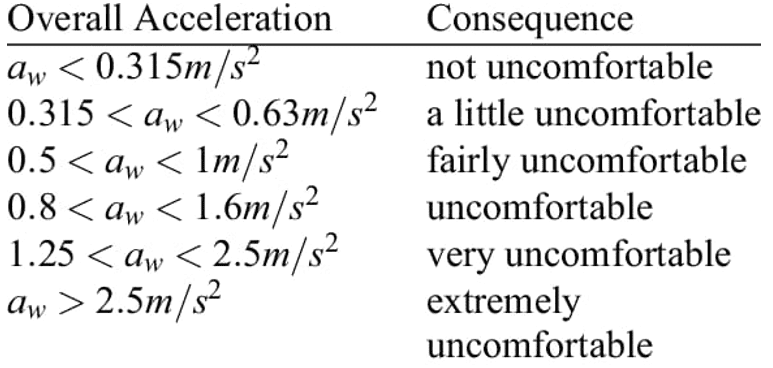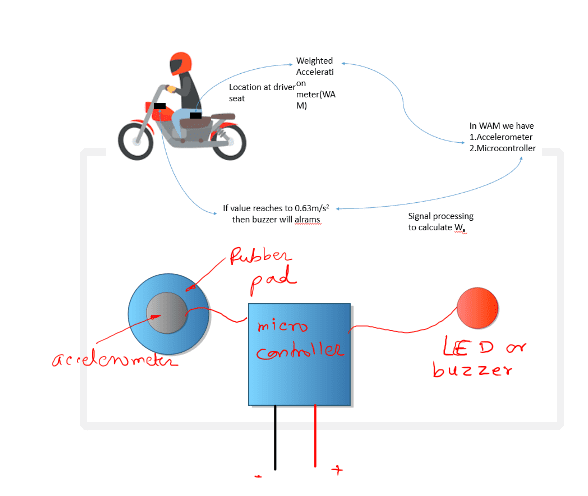Final Project
Problem Definition
1.Issue: Back Pain among Two-Wheeler Riders in India
2.Background: India's reliance on two-wheelers for transportation is significant, owing to factors such as traffic congestion and affordability. However, this mode of transport presents a significant health concern: back pain among riders.
3.Symptoms: Lower back pain is the most common complaint. Riders often experience an urgent need for rest during or after rides.
4.Causal Factors: Poor road conditions contribute to discomfort. Extended exposure to vibrations and accelerations while riding exacerbates back
5.Impact: Reduced quality of life for affected riders. Potential long-term health implications if the issue is not addressed.
6.Guidelines and Standards: Adherence to ISO 2631-1 standards regarding limiting values for accelerations is crucial to mitigate the effects of vibrations and accelerations on the body.

Proposed Solution
To address the prevalent issue of back pain among two-wheeler riders in India, a technological solution involving the calculation of weighted acceleration using an accelerometer and a microcontroller is proposed. This solution aims to provide a more accurate representation of the acceleration experienced by riders, thus aiding in the identification and mitigation of factors contributing to back pain.

Steps Involved
1.Data Acquisition: Utilize a microcontroller to read acceleration data from the accelerometer installed on the two-wheeler.
2.Weighted Average Calculation: Apply a weighted average algorithm to the collected acceleration data to obtain a more stable representation of the actual acceleration experienced by the rider.
Benefits
1.Accurate Representation: The use of weighted acceleration calculation provides a more precise understanding of the forces acting on the rider's body during travel.
2.Data-driven Insights: By analyzing the weighted acceleration data, patterns and trends contributing to back pain can be identified, allowing for targeted interventions.
3.Real time Monitoring: Implementation of this solution enables real-time monitoring of acceleration levels, facilitating prompt adjustments to riding conditions to minimize discomfort.
Implementation Considerations
1.Sensor Placement: Optimal positioning of the accelerometer sensor on the two-wheeler to capture relevant acceleration data effectively.
2.Algorithm Optimization: Fine-tuning the weighted average algorithm to ensure accuracy and efficiency in calculating acceleration.
Future Scope
1.Integration with Safety Systems: Explore opportunities to integrate the calculated weighted acceleration data with safety systems or alerts to provide timely warnings to riders in high-risk situations.
2.Data Analytics: Utilize the collected acceleration data for further analysis and insights generation to inform long-term strategies for back pain prevention among riders.
Machines that will be used
3d printing machine is used for making the casing to keep instruments and sensors. PCB ,laser printing machine will be used for different works.
Software to be used:
Solid works, video editors, image editors, Visual Studio for website developments etc.